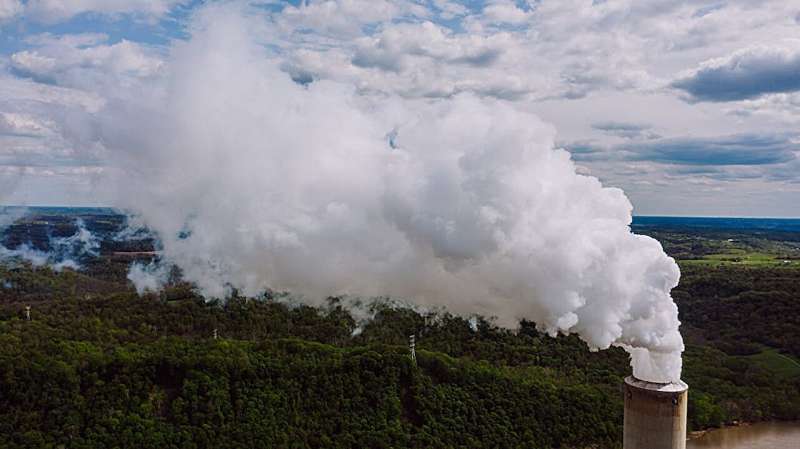This article has been reviewed according to Science X's editorial process and policies. Editors have highlighted the following attributes while ensuring the content's credibility:
fact-checked
peer-reviewed publication
trusted source
proofread
Using pulp and paper waste to scrub carbon from emissions

Researchers at McGill University have come up with an innovative approach to improve the energy efficiency of carbon conversion, using waste material from pulp and paper production. The technique they've pioneered using the Canadian Light Source at the University of Saskatchewan not only reduces the energy required to convert carbon into useful products, but also reduces overall waste in the environment.
"This is a new field," says Roger Lin, a graduate student in chemical engineering "We are one of the first groups to combine biomass recycling or utilization with CO2 capture." The research team, from McGill's Electrocatalysis Lab, has published their findings in the journal RSC Sustainability.
Capturing carbon emissions is one of the most exciting emerging tools to fight climate change. The biggest challenge is figuring out what to do with the carbon once the emissions have been removed, especially since capturing CO2 can be expensive. The next hurdle is that transforming CO2 into useful products takes energy. Researchers want to make the conversion process as efficient and profitable as possible.
"For these reactions, it really matters that we target energy efficiency," says Amirhossein Farzi, a Ph.D. student in chemical engineering at McGill. "The highest burden on the profitability of these reactions and these processes is usually how energy efficient they are."
Farzi, Lin, and their research team focused their efforts on changing out one of the most energy-intensive parts of the carbon conversion process.
Because the approach is so new, there are many questions to answer about how to get the purest outputs and best efficiency. The team used CLS beamlines to observe chemical reactions in real-time, mimicking industrial processes as closely as possible.
The researchers hope to expand the range of products that can be made with CO2, and help develop a truly green technology.
"If we use a renewable energy source like hydro, wind, or solar …then in the end, we have really a carbon-negative process," says Lin.
More information: Roger Lin et al, Efficient integration of carbon dioxide reduction and 5-hydroxymethylfurfural oxidation at high current density, RSC Sustainability (2023). DOI: 10.1039/D3SU00379E


















